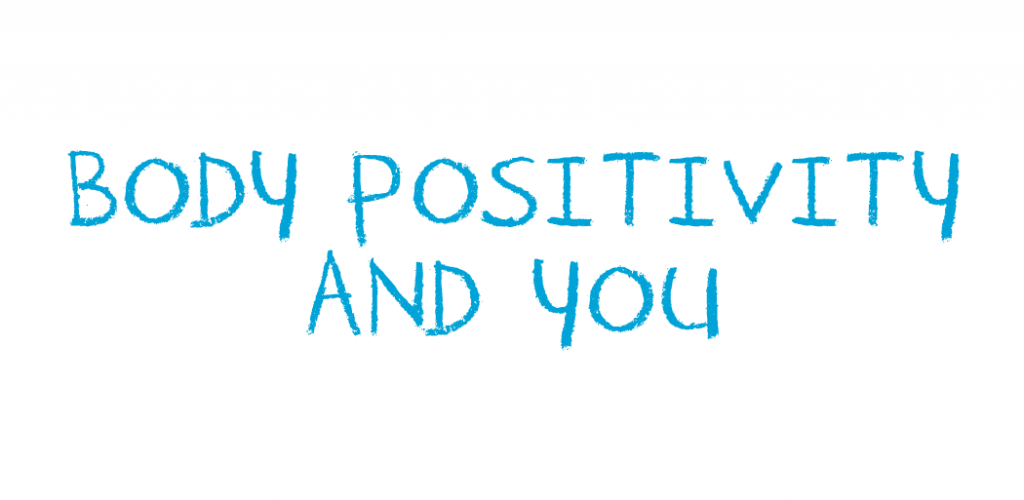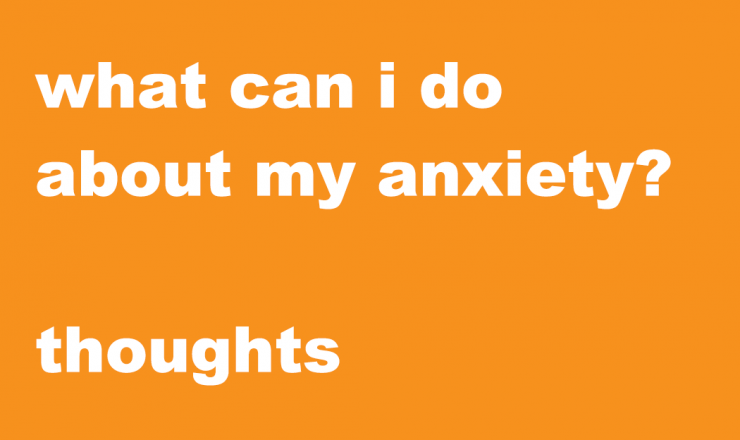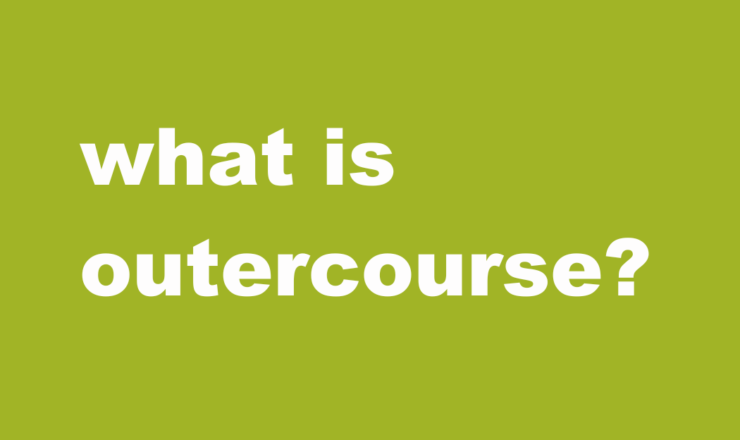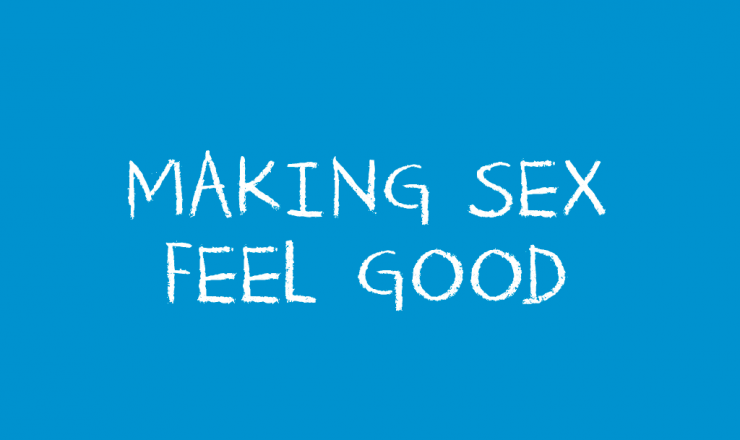Body Positivity & You
What is Body Positivity?
Body positivity is the practice of encouraging positive thinking about our bodies, finding ways to actively love our bodies, and working towards feeling good about bodies in general. It means understanding that all bodies are good bodies. Body positivity involves developing an acceptance and appreciation for the wonderful amount of body diversity that exists in the world. It means remembering that being body positive is not always easy or simple.
The term body positivity began in communities that fought against fatphobia (the fear and dislike of fat people), but has since been adopted by people working to reject ageism (discrimination based on a person’s age), ableism (discrimination in favour of able-bodied people), racism (discrimination based on a person’s race), and other forms of oppression. Body positivity is for people of all sizes, all genders, all races, all ages, all levels of ability – literally every body!
Body positivity is beyond believing that your body looks good. It’s believing that your body is good.
What is Body Shaming?
Body shaming is behaviour that tells people that some bodies are bad or shameful, and negatively influences people into feeling they need to change or hide their bodies. This includes:
- Insulting or judging people’s bodies
- Telling people to work out more or eat different foods
- Expecting people to make their bodies sexier for others
- Pressuring people to buy things to make their bodies more acceptable to others
Criticising someone’s body because you’re worried about their health or because your attraction to them has changed is still body shaming. It makes other people feel “less than” because you don’t approve of their bodies, and there’s no excuse for it.
Being body shamed is a regular part of life for a lot of people, but it’s not the way that the world should be. We get messages from media, religion, businesses, and our peers about what bodies are acceptable and what bodies aren’t. Many kinds of bodies are considered too much or not enough, or to take up too much or too little (real or metaphorical) space. This often includes racialized bodies, trans bodies, disabled bodies, fat bodies, hairy bodies, etc.
These ideas of what are considered “good” and “bad” bodies may change depending on cultural context (eg. what country you’re in, what groups you spend time with, etc). Even within marginalized communities, we’re still influenced by ideas and conversations about bodies including things like who is “queer enough”, “trans enough”, who is performing their race enough; even conversations about who is hot and who is not.
Given how inescapable some of these negative ideas can be, it can take time and conscious effort to unlearn them. Body positivity is a process, not a finished state of mind. It’s about finding ways to encourage more body positivity, and to cope with days when we struggle with it.
Body Positivity and Sex
Developing an acceptance and appreciation for all the wonderful body diversity that exists in the world is not the same as being attracted to all bodies. However, if you are looking to practice Body Positivity in your sex life, there are some things you can try.
One strategy is thinking about the types of bodies that you’re attracted to and why. When we think about people having sex, who do we think about and why? Sometimes it’s because of the media we consume (including porn), which often shows only specific bodies as being sexually desirable. This can lead to the feeling that only certain kinds of bodies have sex or are attractive. Finding media that shows all kind of bodies being sexy can introduce people to a more body positive mindset of how we can all be desirable or all have sex and pleasure if we want to.
Another way to practice body positivity in a sexual context is working on our relationships to our own bodies. It’s common to find it easier to accept and appreciate other people’s bodies, but harder to do that for our own. Spending time trying to understand the ways our bodies are sexy or pleasurable for ourselves, not necessarily for other people, can help validate our feelings and needs. This can lead to being more comfortable in exploring what we want or don’t want, communicating our needs to our partners, and setting boundaries.
Self-Care and Body Positivity
“Self-care is not about self-indulgence, it’s about self-preservation.” – Audre Lorde
For many, practicing Body Positivity starts with learning to accept and love our own bodies. While you don’t have to always feel great with your body to practice body positivity in your communities, loving yourself is definitely an aspect of being body positive.
Self-care is about finding ways to appreciate your body and what it does for you. If you don’t know what activities work for you to feel appreciative toward your body, try thinking about your five senses (sight, smell, sound, taste, touch), and think about what types of sensations your body responds positively to (eg., warm lighting, fresh fruit, your favourite music, your favourite snack, laying down in the grass, etc.). The more you practice self-love, the easier listening to your body’s needs and coming up with ways to meet them can become. Feel free to take your time figuring it out. Bodies are complicated and that’s okay!
Self-Care and Community Care
It can be hard to love ourselves in a world that regularly encourages negative thoughts about our bodies. But we don’t have to deal with these difficult thoughts alone. Pushing back against body negativity is something we can all do together. Being body positive means doing things to challenge body shaming. It’s about action as much as it’s about thought. Here are some ways to take action:
Say reminders that all bodies are lovable out loud.
Saying, writing, or reading body positive affirmations can help on days when we’re struggling with feeling body positive. You can do this alone, or you can tell your friends or partner(s) that their bodies are lovable too.
Focus on body positive language.
This includes not insulting ourselves or others because of our bodies, and not using body negative language (e.g. ableist words like “lame”) to describe things we don’t like. This also means respecting and using terms that people prefer to use to describe their own bodies.
Talk about your body positivity journey.
Talk about the days you feel less positive. Share things that you’ve come to love about your body. Opening up about this experience can lead to more conversations about body positivity in our communities.
Create things with all bodies in mind.
Think of all the movies, books, or video games where bodies are mocked, treated as abnormal, or simply not included. If you’re making something new, think about how you can respectfully include and make more visible the diversity of bodies in our world.
Speak out when you witness body negativity.
This can involve things like checking in with a friend when you hear them using negative language about their own body, contacting organizers of events held in non-accessible spaces, or bringing critical attention to media or products that prey on people’s negative feelings about their bodies or promote ideas that our bodies are flawed. There are lots of big and small opportunities for us to help promote body positivity.
Resources
- Shameless Magazine [Link]
- The Body Is Not An Apology: A website/international movement committed to cultivating global Radical Self Love and Body Empowerment. [Link]
- The Affirmations Deck: Created by a group of queer and trans* youth involved with PPT’s Filling in the Blanks: Queering SexEd project, each card features a statement to help youth feel seen, valued, and supported. [Link]
- Resource on avoiding sizeism and fatphobia in health care from Sexual and Reproductive Health Week: [Link]
For a downloadable resource on this topic, please visit Planned Parenthood Toronto Factsheet Database.
If you have questions about this topic, feel free to contact one of our peer educators. [Link]
Last Edited: May 2020






